We’re going to be blogging several articles that are critical of a more technocentric approach to solving our species’ problems on this planet that some call ‘ecomodernism’ (far be it from me to nail my colours to the mast here, but ecomodernists believe that GDP growth can be de-linked from environmental destruction, which is insane). We’ll start with this one, by Simon Fairlie, of the Land Magazine (see my review of his ‘counterculture memoir’), who looks at the farm-free future for humanity spelled out in George Monbiot’s latest book ‘Regenesis’.
Well, is technology going to save us? No, don’t be silly – technology is what caused the problems in the first place, and it now (at least under a capitalist system) has its own momentum, and is running away from us. We’re now the servants of technology, not its master. This is going to be one of the threads in an upcoming book, and I’ll try to interview some interesting and engaging people on the subject, including Simon, Chris Smaje, Dave King (who proudly calls himself a Luddite), and I might try to rope in Darren Allen, who I don’t agree with about everything – but his writing is SO entertaining.
Thanks
Dave
– over to Simon:
Regenesis starts harmlessly enough. In his first chapter George Monbiot illustrates the complexities of soil structure by describing what he sees when he looks at a sod dug up from his orchard through a 40x magnifying eyepiece. It is an elegant snapshot of the world beneath our feet that we always vaguely knew about, but rather took for granted until Merlin Sheldrake and others unveiled some of its mysteries.
In chapter two he lays into industrial agriculture, cataloguing failings and dangers that many readers of The Land (and Lowimpact – Dave) will already be familiar with. The theme is carried forward in the following chapter, where he targets agricultural pollution and the excesses of the intensive livestock industry. He then goes on to visit three farms in the UK that are trying to address some of these problems. The first is Ian Tolhurst’s stock-free market garden in Oxfordshire, which rightly meets with Monbiot’s enthusiastic approval. His comments on the other two holdings he visits are also sound: the no-till arable farm would be more convincing were it not reliant on glyphosate weedkiller. The mixed farm employing mob-grazing and heritage grains has high aspirations but low yields.
Much of this is music to the ears of any reader supportive of agro-ecology and food sovereignty. Even if not much of it is breaking news, it is enlivened by Monbiot’s acute observations and sharp turn of phrase.
However, it soon proves to be the overture to something more discordant. Soft cop George is buttering us up before hard cop Monbiot launches in with the tough questioning. The crime, he alleges, is not industrial agriculture, but agriculture itself: “Farming, whether intensive or extensive is the world’s major cause of ecological destruction.” Overheating the world’s atmosphere and oceans through fossil fuel use apparently comes second.
The culprit is every farmer, big or small, chemical or organic (with the exception of Ian Tolhurst). A farm-free world is what Monbiot hopes to see, where everyone enjoys farm-free food. “We can now contemplate the end of most farming, the most destructive force ever to have been unleashed by humans.” To this end he visits the Solar Foods laboratory in Finland where scientists are developing a high protein foodstuff made from bacteria fed on hydrogen. He eats a pancake made from the substance that he believes “represents the beginning of the end of most agriculture.” Since this substance has no name, I call it “studge”, after the breakfast cereal that readers of Saki may remember was marketed on the basis that “people will do things from a sense of duty that they would never attempt as a pleasure”.
The Agribashers
George Monbiot is by no means the first writer to launch an all-out attack on agriculture. Since the publication of Marshall Sahlins’ Stone Age Economics in 1972 (see p.53 of this issue) there has been a crescendo of variations on the theme that it all went wrong when people started keeping animals and growing crops. Examples include Paul Shephard’s call for humanity to Come Home to the Pleistocene, the late James Lovelock’s Revenge of Gaia, Yuval Noah Harari’s contention that agriculture was “History’s Biggest Fraud”, James C Scott’s Against the Grain, and the report Rethinking Food and Agriculture by the think tank Rethinkx. Three of these – Shepard, Lovelock and Rethinkx – propose the same solution as Monbiot: feeding people, in Lovelock’s words, on “tissue cultures of meats and vegetables and junk food made from any convenient organism”.
Two differences between Monbiot’s book and earlier exponents of the agribashing tendency are worth mentioning. Firstly there are now start-up labs working to produce the junk food that will replace agricultural products; and there are generations of urban dwellers who are now so divorced from the land, and so wrapped up in cyberspace that they will probably be quite happy to eat the stuff. Secondly Monbiot, through his long association with The Guardian, has rather more influence than most of his predecessors. Regenesis was heralded by an hour-long documentary on the subject on Channel 4. In 2013 when his book Feral came out, few people had even heard of rewilding: now it is UK government policy.
Neither Spare nor Share
Monbiots’s third chapter, which bears the engaging title “Agricultural Sprawl”, begins by continuing his onslaught upon industrial agriculture in the form of the factory chicken farms currently polluting the River Wye (see The Land 29). He continues in this vein for 17 pages until he abruptly changes his tone:
“You might, by now, have decided that you want nothing more to do with intensive farming: from now on you will eat only meat, eggs and milk from animals that can roam outdoors or have been certified as organic . . . If so I can offer you little comfort.”
The problem with grazing animals, he continues, is that they occupy a rather large proportion of the world’s land area: 28 percent according to figures cited by Monbiot (slightly less than the 31 percent covered by forest).1 Another 12 percent is occupied by arable crops, and one percent by buildings. The rest is desert or icy waste.
Forty percent of the world’s land surface is devoted to agriculture, and as such is a threat to global biodiversity because “the great majority of the world’s species cannot survive in a farmed landscape”. The reference for this statement is a trio of UK papers on the benefits of “land-sparing” as opposed to “land-sharing”. But Monbiot is in favour of neither. Land-sparing – pursuing highly intensive agriculture over a relatively small area in order to give extensively farmed land back to Nature – would triple pesticide use and lead to even greater use of arable land for animal feeds and biofuels. Land sharing through organic farming and regenerative agriculture has lower yields and takes up too much land. The problem with intensive farming, writes Monbiot:
“is not the adjective, it is the noun . . . We appear to be trapped between two dangerous forces: efficiency and sprawl. Farming is both too intensive and too extensive. It uses too many pesticides, too much fertiliser, too much water and too much land.”
Rural Sprawl
It is indisputable that the task of nourishing seven billion people has reduced the areas of wilderness on the Earth to enclaves and condemned numerous species to decline and extinction. Such wilderness and many of the species associated with it in the UK disappeared centuries ago. This is a matter of genuine concern, which I will come back to later.
But whether the conceit that this represents “agricultural sprawl” is a helpful one is another matter. Monbiot focuses mainly on the UK, and so will I. Look out of the window on a train journey from the less intensively farmed West Country up to London and you will catch glimpses of a great many landscape features: fields of wheat, maize, potatoes or rape, meadows cut for silage or left to grow for hay, pastures of every feasible ecological status and condition, downland grazed by sheep, water meadows where rivers weave oxbow curves, old commons turning to scrub, fields left to grow wild, stately parks with spreading oaks, edge of town allotments, oak, beech or sycamore woodlands, hazel coppice, conifer plantations, spinneys, hedgerows, ditches and bogs.
Within this mosaic, thousands if not millions of species find their niche. Most evolved over the long period of time that preceded the neolithic agricultural revolution, but many have benefited from the disturbance caused by agriculture, or adapted to its rhythms. According to Plantlife:
“Hundreds of different wild flowers and fungi have co-evolved over millennia with farmers managing the land as hay meadows and pasture. This unparalleled plant diversity provides the life support for our invertebrates, birds, mammals . . . More than 120 species of wildflowers grow in arable habitats and together make up one of the most threatened groups of plants in the UK. Many of our most beloved plants – such as cornflower, corn marigold and corncockle – have drastically declined and no longer colour our farmland.”
This diversity of landscape features and species is the result of about 6,000 years of co-operation between the people of this island and its environment in the name of agriculture, and to most people’s eyes it looks green and pleasant, even if it doesn’t have the romance or mystery of Pleistocene wilderness. Yes, it has become degraded and species are under threat largely because of industrial farming methods. A judicious measure of rewilding might help to redress the balance. But complete abandonment of agriculture would be detrimental to biodiversity, since we would lose many of the wild species that have successfully adapted to agricultural disturbance, as well as the innumerable varieties of domestic plants and animals that are utterly dependent on a farmed ecosystem.
On your train journey you will also find that for much of the time you can’t see anything of the landscape, because of all the trees growing up by the side of the track. This is nature, wilderness, trying to regain lost territory, which it would do if Network Rail didn’t arrange for it to be hacked back from time to time. If Monbiot’s farm-free landscape were let loose, that is pretty much all we would see for much of the journey. A return to the blanket of woodland which covered much of Britain before our forefathers let the light in and allowed sun- and disturbance-loving plants and insects to proliferate, might feel more like sprawl than the highly variegated farming landscape that much of Britain enjoys now.

Bridport to Maiden Newton railway line passed nearby.
Urban Sprawl
Anyway, real sprawl is in a different league. It multiplies on the outskirts of towns like Didcot and Basingstoke, increasing in intensity, until by the time you get to Woking or Slough it is relentless. Rows of terraced houses give way to new semi-detached estates while half-built roundabouts map out the frontiers of future building sites. Who are all these people? What do they do, apart from ‘taking in each other’s washing’? Why so many? By the time you get to Vauxhall or Paddington the sprawl becomes vertical, as office blocks and residential towers, starved for space, stretch skyward like plants competing for light.
Monbiot’s hatred of farming has become so visceral that the pastures and cornfields of the West Country are in his view more to be feared than the spread of concrete and tarmac. The cows and sheep that we glimpse from the train window, along with the pigs and chickens that we don’t see, he reckons threaten the carrying capacity of the planet, more than the people who rear them:
“While the human population growth rate has fallen to 1.05 percent a year, the growth rate of the livestock population has risen to 2.4 percent a year . . . The biggest population crisis is not the growth in human numbers but the growth in livestock numbers.”
The biggest numerical increase in recent years no doubt; but it is a bit rich to vilify cows, pigs, sheep and poultry when they do little other than eat, sleep, procreate and defecate, while human occupants of the sprawling metropolis demand cooked food, clothes, hot showers, central heating, computers, motor-cars, hospitals, shopping, foreign holidays and who knows what else. The built environment may only occupy 11 percent of the UK land area, but it sucks up far more energy and resources from ghost acres than the countryside does.
Yield-Blindness
Let us unpack this figure of 2.4 percent annual growth in livestock numbers. Virtually all of this increase is in the intensive chicken and pork industries; very little is caused by cattle or sheep. Monbiot cites USDA figures showing that the number of cattle in the world has increased by 15 per cent over the last 50 years, but all of this increase occurred between the years 1971 and 1975. According to United Nations data, this figure severely underestimates the number of cows in Africa. But both sources agree that in the USA, Russia, East Asia, and Europe the number of cattle is falling. The UK cattle population has declined by 25 per cent since the early 1980s.2
What then of the factory farmed pigs and chickens that account for nearly all of the annual 2.4 percent increase in livestock numbers? They are mostly fed on cereals and soya beans, grown on arable land. Sixty percent of the UK’s arable land is used to grow feed crops for animals and on top of that we import large quantities of soy and maize from ‘ghost acres’ in the Americas.
The surest way to reduce the impact of farming upon the natural environment would be to stop using vast areas of arable land to grow monocultural crops to feed to pigs and chickens at inefficient conversion rates. Monbiot’s enthusiasm for doing away with this inefficient way of producing protein, and releasing several million acres of UK land for other uses is shared by large numbers of people within the agro-ecology and regenerative farming movements. But that is where agreement ends. Monbiot would like to rewild any land so spared, whereas many in agro-ecological circles would prefer to see some of it used to enable a return to mixed organic farms where ruminant livestock are part of the fertility building cycle, and the protein from factory farmed animals is replaced by pulses.
A month after the publication of Regenesis, the Sustainable Food Trust (SFT) released its report Feeding Britain from the Ground Up, which advocates halving grain production, encouraging mixed organic farming, growing more peas and beans and ensuring waste food and by-products are fed to livestock. The SFT calculates that in this manner the UK could maintain or even increase existing levels of food self-sufficiency, while allowing an extra 2.5 million hectares for tree planting and nature recovery (see page 12 of this issue).
A major weakness of Regenesis is that it doesn’t give a fair hearing to this approach. There is no analysis of what it might achieve or require in the way of land-use reallocation, or what carbon and environmental benefits it might bring. The one case study Monbiot provides of such a farm is an experimental project on poor land with an absurdly low level of productivity. I agree with him that too many agro-ecological farmers are “yield blind . . . [using] large areas of land to produce small amounts of food ” But he too is blind to examples of far more productive organic mixed farms, such as those which provide case studies for the SFT report.
Nor does he make any mention of default livestock — farm animals that can be fed off crop residues, food waste, or grass maintained for other purposes, such as nature conservation, fertility building or open spaces. This was an approach he endorsed back in 2010.3
Since then, much research has been carried out showing that these “ecological leftovers” are substantial – notably Hannah van Zanten’s calculation that the processing and food wastes generated by the sort of vegan diet that George advocates, when fed to livestock, produce meat sufficient to meet more than a quarter of all human protein requirements.4 If this was one of the 5,000 academic papers that Monbiot claims to have read during the research for this book, he apparently thought it was of no significance. (See also the recent report from WWF, covered on page 12 of this issue of The Land.)

suspects of having such a computer-like brain that he
“would fail the Turing Test” .
Homo High-Rise
Monbiot’s strongest argument for the development and propagation of bacterial studge is founded on environmental justice. While his favourite food is a “green peppercorn and lemongrass coconut broth”, and he has a horror of lardy cake, most people like to eat animal protein and fat, not least manual workers. There is growing demand from the poor of the world to consume it at the rate that people in industrial countries enjoy, or indeed at the rate that we enjoyed it in the pre-agricultural Pleistocene past in which the metabolism of homo sapiens evolved.
The only way that this demand could currently be satisfied is by feeding yet more cereals and soya to pigs and chickens in factory farms, which would be an environmental and animal welfare disaster. However unappealing the prospect may be of having the majority of our digestible protein produced in a laboratory by white-coated geeks, it is surely better than ploughing up increasing tracts of virgin forest to feed animals incarcerated in a prison from which the only exit is death.
Or perhaps not? The production of studge requires large amounts of hydrogen, produced by electricity. As noted in issue 30 of The Land, almost every industry currently reliant on fossil fuels is looking to hydrogen to reduce its carbon emissions.5 A recent paper by AH MacDougal et al warned that if limited supplies of renewable energy are used to manufacture edible biomass instead of replacing fossil fuels, the long term result would be increased global warming: “maximum warming reduction from bacilliculture would require deploying the technology only after decarbonisation has reached its limits.”6
However, suppose within a few decades there is a flowering of the hydrogen economy, and sufficient renewable energy is available to produce bacterial protein cheaper than soy protein, lab-grown fat cheaper than palm oil, and cultured carbs cheaper than wheat or barley. Given the smorgasbord of fake steaks, sham hams and other skeuomorphic delicacies which Monbiot anticipates could be fabricated using studge as a raw material, it is not hard to imagine the new diet being accepted by inhabitants of the vertical metropolitan sprawl that already thrives in countries such as China and South Korea.7
But what of the two billion peasants worldwide who currently make their living from farming? Are they to be dispossessed of their lands and herded into high-rise buildings to peer at the natural world through a computer screen, and occasionally troop down to the gymnasium for exercise, while their former fields are invaded by scrub? With everybody eating the same substance, will the demise of agriculture herald the final convergence of tribal, regional and national cultures into one banal global monoculture? This is a scenario that captains of industry, whether of capitalist or Sino-communist persuasion, aided and abetted by their techno-vegan eco-consultants, will no doubt be happy to accelerate.
An Agricultural Revolution
There is, however, an alternative application for the studge, which is to feed it to animals. That after all is what the soya protein that it is destined to replace is used for – and it is what scientists originally thought their studge would be used for.
If it ends up fed to pigs and chickens in factory farms on the periphery of megacities, that would be a disaster both for the incarcerated animals and for peasant farmers unable to compete with this scale of industrial production. It would result in vast surpluses of nitrogenous phosphate-rich slurry concentrated in places where they served no purpose.
On the other hand if – and it is a big “if” – factory farms fell out of favour, and instead the studge were distributed to smallholders and family farms scattered across the land mass, it could provide a boost to organic agriculture, especially in less developed countries.
As Monbiot points out, countries in the global south are blessed with ample amounts of solar energy with which to manufacture the stuff. If it were made available cheaply to peasant farmers, then they might choose to eat it if times were hard; but otherwise they would probably find it more advantageous to feed it to their livestock and sell the resulting milk and meat to town-dwellers who were bored with eating studge.
The result would be an increase in the volume of manure available to farmers, and a corresponding improvement in the fertility, health and yield of their soils. In the clover-fuelled agricultural revolution of early modern times, European crop yields rose spectacularly through the expedient of being able to keep more livestock, a double bonus.
A hydrogen-fuelled agricultural revolution could do the same for farmers in the tropics. It would render the chemical fertilisers of the fossil-fuelled Green Revolution redundant, replacing them with manure that would increase soil organic matter and carbon, and improve moisture retention. Increases in yields could help to stem further incursions into tropical forest and savannah.

According to a study carried out in 2016, the carbon footprint of urban dwellers in China is nearly
three times that of rural dwellers (7).
Priorities
Is this a science fiction fantasy? Perhaps, but no more so than Monbiot’s farm-free dystopia. However much one may disagree with his conclusions, one may thank him for raising important questions and intriguing possibilities in a highly readable book. Perhaps he is making extreme proposals simply in order to shift the boundaries of the debate, and hence the perception of what is mainstream, a tactic known as the radical flank effect.
The main worry is his repeated characterisation of farming as “the most destructive human activity ever to have blighted the earth”. Agriculture has a lot to answer for; but does it really bear comparison with the threat to life on Earth as we know it from the oil and coal industry?
Farming and livestock husbandry have been with us for around 12,000 years. The curves that describe human population growth, global atmospheric CO2 levels and the extraction of fossil fuels all share the same exponential rise over the last century, and that is no coincidence. The imperative is not to stop farming, but to phase out fossil fuels very quickly. Cavalier polemics that cast primary responsibility for our predicament elsewhere are a dangerous diversion.
—–
Regenesis: Feeding the World Without Devouring the Planet, by George Monbiot, Allen Lane, 2022.
—–
REFERENCES
1. FAO, State of the World’s Forests, 2020.
2. The discrepancy between USDA and UN-FAO data is analysed at Global Cattle Inventory: USDA v FAO, https://cairncrestfarm.com
3. G Monbiot, ‘I was Wrong about Veganism’, The Guardian, 6 Sept 2010.
4. H van Zanten et al, ‘The Role of Livestock in a Sustainable Diet: a Land-Use Perspective’, Animal 10:4, 2016.
5. S Fairlie, ‘Is There Life After Fert?’, The Land 30, 2022.
6. A H MacDougal et al, ‘Estimated Climate Impact of Replacing Agriculture as the Primary Food Production System’, Environmental Research Letters, 16:12, 2021, available at https://iopscience.iop.org
7. K Feng and K Hubacek, ‘Carbon Implications of China’s Urbanization’, Energy, Ecology and Environment vol 1, pp39-44, 2016.
This article originally appeared as ‘Monbiotic Man’ in The Land Issue 31

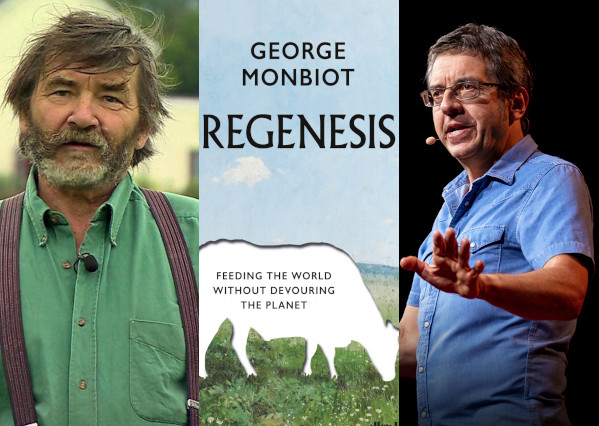
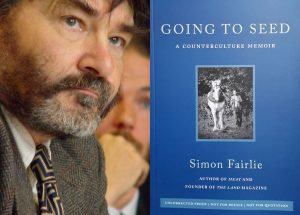
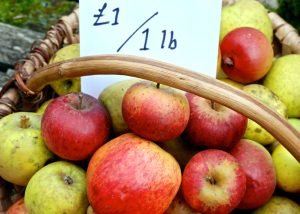
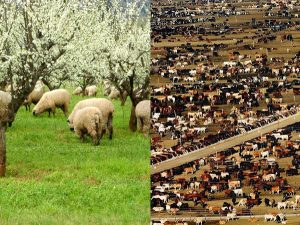
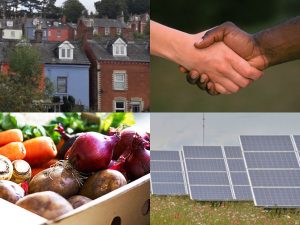
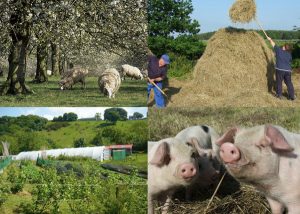
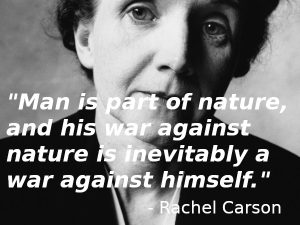
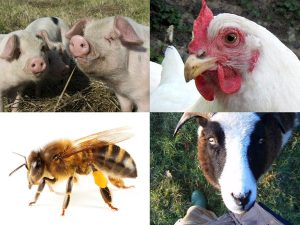
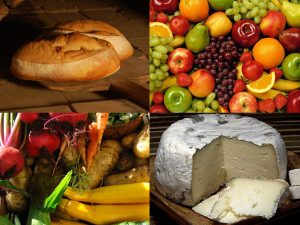
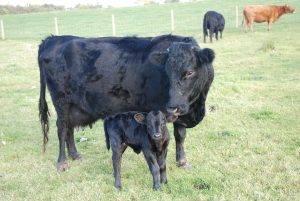
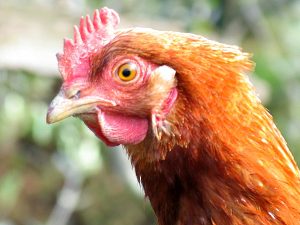
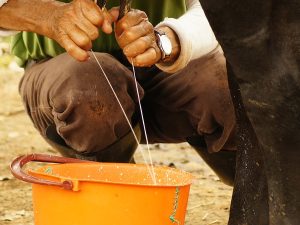
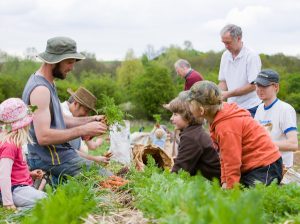
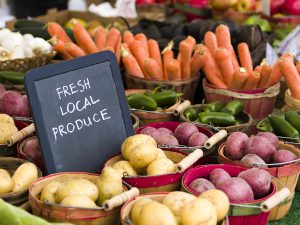
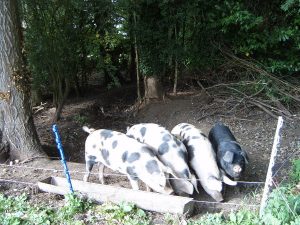
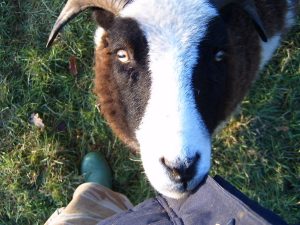
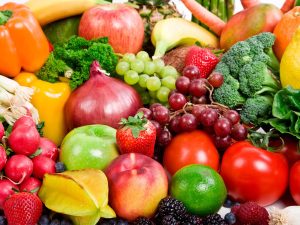
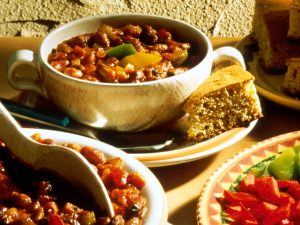
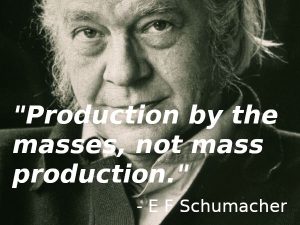
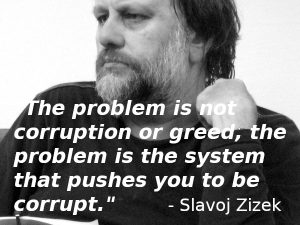
2 Comments
I feel that the initial problem [?] here is the definition of the word “Farm”! If we use the accepted meaning that a “farm” is an area dedicated to the production of “food stuffs” [we will skirt around such things as “wind farms” etc. but it could be argued that even they assist with the production of such food] then the main idea could be conceived as an area dedicated primarily [if not solely] to the production of such items. In which case the problem is not so much what the farm does as opposed to the size of it? Are the farms that produces ants to eat covering some few square yards or the farms that grow wheat for bread etc. covering some hundreds of acres not both still farms?
So can we ask the same question again – “will future food be ‘farm-free’?” Is not the person growing a couple of different pots of chilli’s not farming the same as the person producing say 5000 tonnes of wheat a year? Better to ask “how will future food be farmed?” Either via intensive monoculture farming or the loose generic farming of many items of different styles in the same area but only in small amounts – primarily as “subsistence farming” whre the majority of food is grown to supply the “farmer, hs family and the local area?”
This puts a completely different view on the above questions – which is better [to be read as “better for the environment, the people in general, the farmed creatures – animal, vegetable or dare I ask mineral – you “wind farm”]. Without going too deeply into the entire subject – which is both long and involved can I ask the simple question “How do you see food production in the future? a deep monoculture set up, utilising machinery to the proverbial “Nth degree” or as in the older style of a collection of different techniques to cover the smaller amounts of food stuffs produced – thus giving rise to a couple of older sayings – “Man does not live on bread alone!” or the famous one [from a certain film script which many will remember – more that you’d like to think actually] “Soylant Green is people!”
As a “Primative” or “Luddite” I know which way I’d like to go but how do others feel?
William Cobbett makes sense to me!
the Walrus
I looked at Regenesis to see if Monbiot addresses the problem of corporate ownership of the food system if we move to a farm-free food industry. He suggests a solution – anti-trust laws, and relaxing of IP legislation. But he must know that petitioning the state isn’t going to work – as long ago as 2000 he wrote ‘Captive State’ – https://www.monbiot.com/books/captive-state/).
So a bacterial food / no-farm future will be even more of a corporate world, ensuring that states keep pursuing growth policies that are far more dangerous to nature than farming, and that barriers will be erected to prevent the growth of any new / local / ‘commons’ economy to challenge capitalism, which is destructive of nature, democracy and human well-being in so many more ways than agriculture.